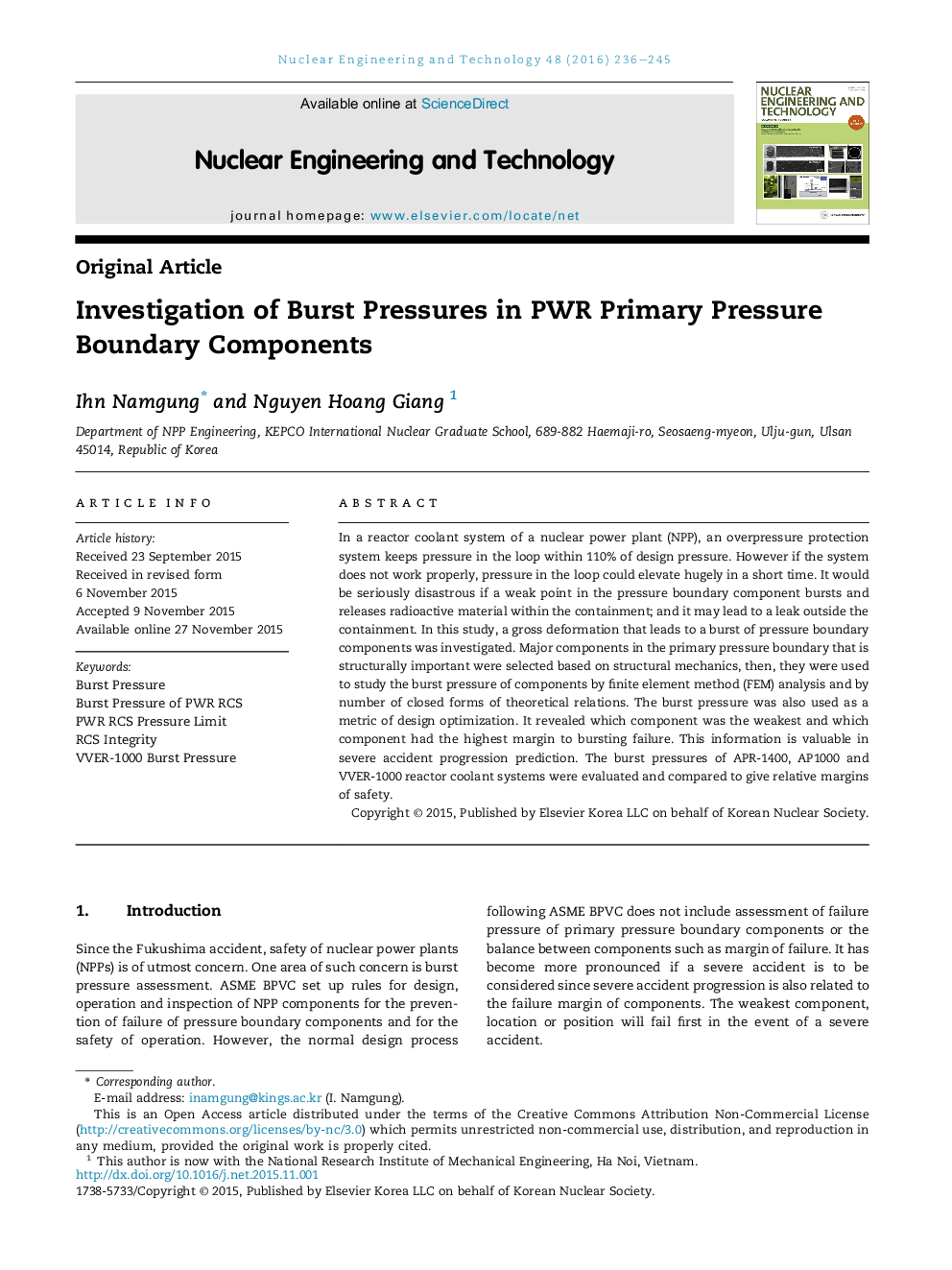| Article ID | Journal | Published Year | Pages | File Type |
|---|---|---|---|---|
| 1740018 | Nuclear Engineering and Technology | 2016 | 10 Pages |
In a reactor coolant system of a nuclear power plant (NPP), an overpressure protection system keeps pressure in the loop within 110% of design pressure. However if the system does not work properly, pressure in the loop could elevate hugely in a short time. It would be seriously disastrous if a weak point in the pressure boundary component bursts and releases radioactive material within the containment; and it may lead to a leak outside the containment. In this study, a gross deformation that leads to a burst of pressure boundary components was investigated. Major components in the primary pressure boundary that is structurally important were selected based on structural mechanics, then, they were used to study the burst pressure of components by finite element method (FEM) analysis and by number of closed forms of theoretical relations. The burst pressure was also used as a metric of design optimization. It revealed which component was the weakest and which component had the highest margin to bursting failure. This information is valuable in severe accident progression prediction. The burst pressures of APR-1400, AP1000 and VVER-1000 reactor coolant systems were evaluated and compared to give relative margins of safety.
